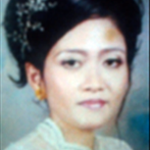
Lely Nurjanti
Indonesia
Title: The role of immunological reaction and proinflammatory mediators in acne vulgaris etiopathogenesis, applications in dermatology practice: a case report
Biography
Biography: Lely Nurjanti
Abstract
Introduction: Acne vulgaris was not infectious, and is very common, chronic inflammatory, self-limiting disease of pilosebaceous units. Affected approximately 85% of adolescent was physiological acne and 10-15% manifest as clinical acne. Four major factors were involved in the etiopathogenesis: follicular hyperkeratinization, increased sebum production, abnormality of microbial flora and inflammation process. Acne vulgaris inflammation process was divided into early stages (adaptive Th1 cell and innate immune complement to non-specific antigen) and late stages (innate and adaptive immune response to specific antigen). Acne vulgaris dermal inflammation was not directly caused by bacteria in the dermis, but it was resulted from biologically active mediators that diffuse from follicle. Pro inflammatory mediators in acne had no protective role but it had harmful effect causing persistent inflammation, soft tissue destruction and scar formation, cell cycles control disturbances-cell survival and apoptosis, termination of differentiation and proliferation, hyperkeratinization, sebaceous glands hypertrophy and lipogenesis, pruritus and pigmentation. Biological active mediators were produced in innate immune response by the binding of the bacterial PAMPs to innate surface PPRs (TLR2 and TLR4) of the keratinocytes, sebocytes and phagocytes, through innate cell cytoplasm PPRs-NLRP3 inflammasome activation, through PAR2 gene activation, through FGFR2 of keratinocytes activation. Biological active mediators were also produced by adaptive immune response by the binding bacteria that had been recognized by APC (through MHC class II) to the CD4+ of naive T cells that activated Th1, Th2, Th17 and Treg. Anti-proinflammatory mediator drugs (the effects of some drugs were still in research): acted in NFkB central pathways (steroids), antagonist TLR2 (isotretinoin), acted in NLRP3 (nitric oxide), decreased of expression of PAR2 gene-TNFα (tetracycline, doxycycline, minocycline), inhibited retinoid catabolism-antagonist TLR2 (erythromycin, roxithromycin, clarithromycin), down regulated TLR2 and TLR4 receptors (ALA PDT), antagonist FGFR2 (anti androgen, isotretinoin, BPO, tetracycline, erythromycin), IL1 targeted agents (Anakinra, rilonacept, canakinumab), TNFÉ‘ inhibitor (etanercept, infliximab, adalimumab), leukotriene B4 antagonist (zileuton), leukotriene antagonist (montelukast), immunotherapy (immunization-CAMPS was neutralized and prevented inflammation).
Case Report: Five cases of acne vulgaris 3rd to 4th grade in female patients, 20-30 years old who had been treated by combination of topical tretinoin 0.05% and fluocinolone acetonide 0.025% for four weeks were reported. The results were good (decreasing acne to 1st grade to no acne). Tretinoin 0.025% was chosen as maintaining the treatment.
Discussion: Treatment of choices for chronic inflammation in acne was proinflammatory antagonist drugs. Steroid (acted in NFkB pathway) and tretinoin (antagonist TLR2 and FGFR2) topical combination had good results. Tretinoin decreased comedo, sebum production and hyperkeratinization, normalized keratinization and differentiation, replaced disorganized collagen fibers and formed thicker-elastic epidermis (skin rejuvenation), decreased PIH and scar/keloid formation. Steroid decreased chronic persistent inflammation and scar formation and decreased erythema and irritancy those were caused by tretinoin.

